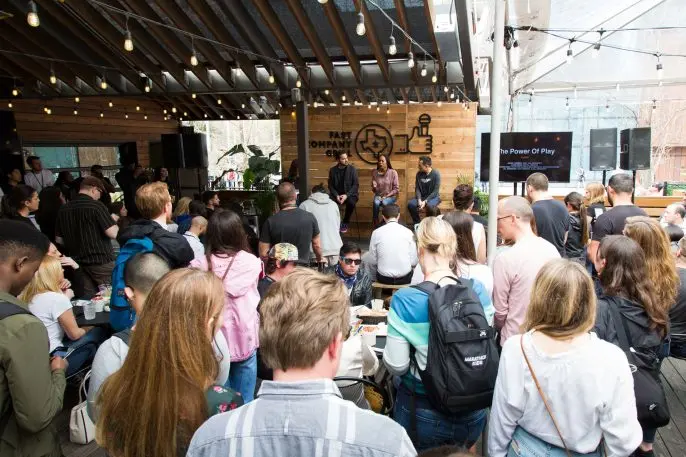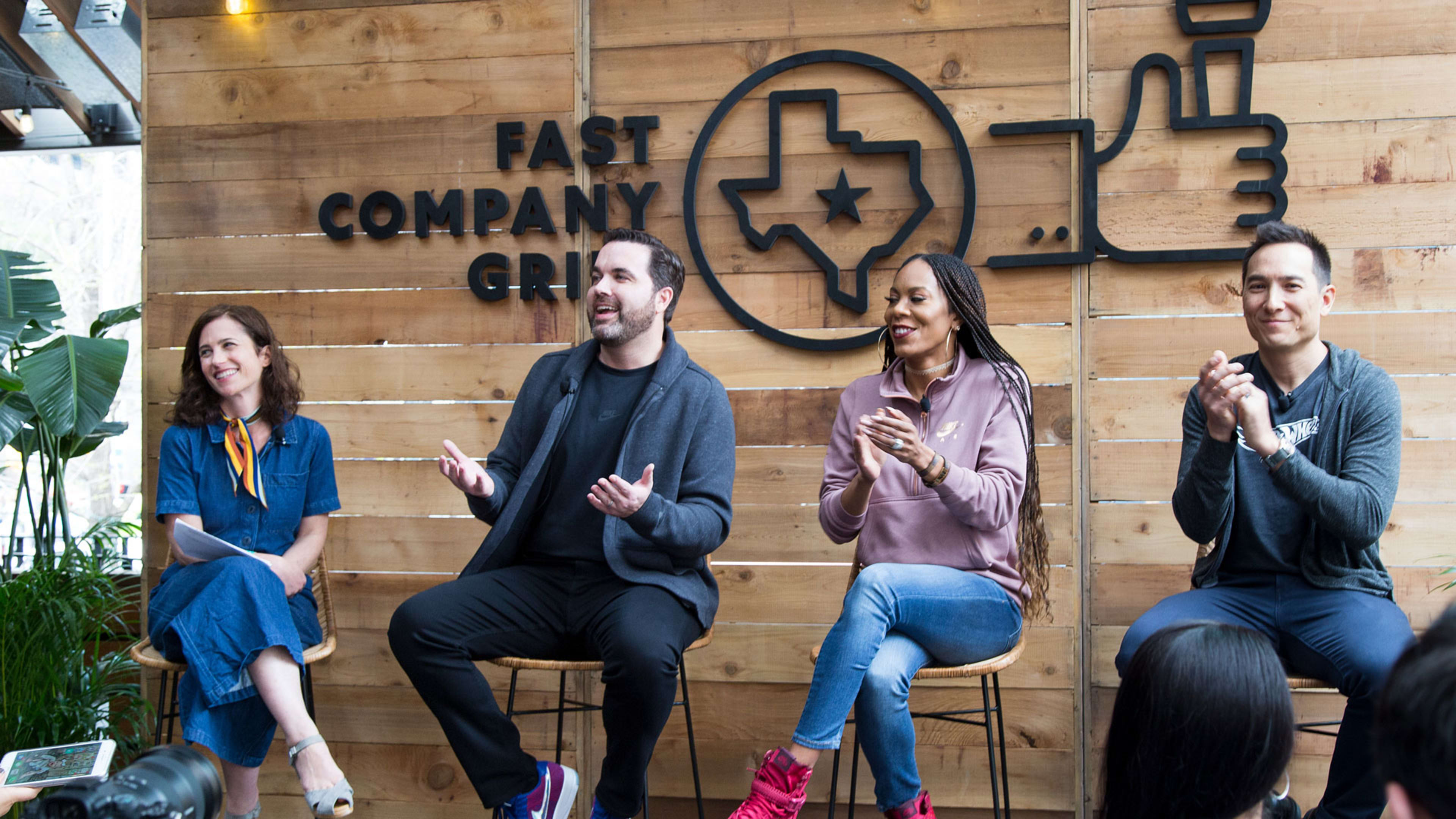Quick question: Have you played today? How about your kids or nieces and nephews? Might want to fix that with a quick bounce of the ball, swing of the racket, toss of the frisbee–or even sprint down the track.
For a generation of “digitally native,” highly scheduled kids and teens, the need to get out and play has never been more urgent. Our society’s transformation into a tech-driven culture has resulted in unprecedented levels of inactivity. Simply put, as a species, we’re sitting around more than ever before.
In a panel at the Fast Company Grill at the SXSW festival in Austin today, editorial director Jill Bernstein spoke with an Olympic athlete and executives from Nike and Mattel about the power of play–the unstructured, simple, fun, active things that kids (and adults) do for enjoyment, and the still surprising benefits we all get from physical activity.
“This generation of kids is the least active in history,” said Jorge Casimiro, Nike’s chief social & community impact officer. He added that the challenge for the sneaker company these days is that, “all kids have potential, they don’t all get opportunity.”

“The motivation that kids have [when choosing an object to play with] can be different than the parent,” Down told the crowd, adding that Mattel will soon release an “ethnographic” play object that targets Hot Wheels’ 7-10 age group. The company also sees an opportunity in a younger market, which dovetails with research that getting kids started on play as early as possible is the best way to create positive habits for them.
The retired sprinter Sanya Richards-Ross, a four-time Olympic Gold Medalist, entrepreneur, and author, rounded out the discussion with her direct experience of play as both a fiercely competitive track athlete and a woman who understood that play can meet different needs for girls than boys. “Young girls need to see it’s not always about winning,” she said. “It’s about how’s it going to make me better, stronger, more confident.”
All children need role modeling, but “in sports you can be beautiful,” she said. Girls need to hear that message loud and clear, as she realized when she got a letter from a young athlete who, before hearing from Richards-Ross, “wasn’t going to run track anymore because [she] didn’t think [she] could wear mascara.”

The panel, held on International Women’s Day, also touched on the need for more female coaches in sports, and for gender inclusivity training for all coaches, along with some old-fashioned encouragement by parents to get their kids outdoors. “Just because it’s raining doesn’t mean you don’t go outside,” said Portland, Oregon-based Casimiro.
Richards-Ross also emphasized the point, saying, “When you get up and you work out, you’re going to be a better student. Even from my own personal experience, I competed for 13 years and went to three Olympic games and won four gold medals. People ask where I find the time, and [I find it] because of what I gain from sports. It’s because of sports that I’m able to pursue all these things because I have the skill sets” to succeed in other areas.
Down agreed, emphasizing that the power of play is fundamentally about providing access and a level playing field to all children, “breaking down those barriers,” and giving them the tools and experience for success later in life.
The panel closed with a question about the importance of play for adults. What needs do we grown-ups have for our own active, unstructured activities? Richards-Ross and Casimiro agreed that the drives and needs for activity never stop, no matter how old we get. But in a conversation focused on setting up the next generation for success, the final thought turned back to how one of the most valuable parts of play of adults tracks directly back to its usefulness for youths.
“I think we’re all kids at heart. We’ve got to remember that,” Casimiro said. “The same kind of intentionality that applies to the work we do for kids needs to apply to us, if for no other reason, because we are their role models.”
Recognize your brand’s excellence by applying to this year’s Brands That Matter Awards before the early-rate deadline, May 3.
